Ever catch yourself looking at clouds and seeing different shapes and forms that suggest things you think you recognize? Of course, because it is a natural thing to do. You might be interested to learn that artists use this same perceptual game as well to make art.
Staring at a blank canvas or sheet of paper is often the most intimidating step of beginning an artwork. What do I draw or where does the first mark go? Frottage is a form of automatic drawing that gets you into the action from the beginning and the less you think about it at first…the better! The following is a brief introduction to a drawing process that leads to action steps you can take to try or use as a family activity. This is a fun, easy, low cost, involves minimal materials, and is very adaptable.
So, what is “frottage”? It is the process of creating a rubbing on paper with art materials over a suitable surface. In fact, it is the French word for “rubbing”. If you have ever found magic in transferring the image of a coin onto paper by rubbing a pencil over it then you have the basic idea. The important Surrealist artist, Max Ernst, coined the term “frottage” in 1925 to describe a series of drawings he made during a period he was feeling dull artistically. He found renewed inspiration one day from staring at the wood grain in the floorboards of a hotel he was staying at. Ernst took a sheet of paper and using a stick of graphite (same material as pencil lead) he made a rubbing of the floor’s surface which lifted the texture of the wood grain. On the paper and within the patterns of the grain were fantastical landscapes inhabiting the subconscious imagination and Ernst was hooked. Here is a rare video of Max Ernst talking about and demonstrating his technique along with some of the work he created from it Max Ernst Frottage Video.
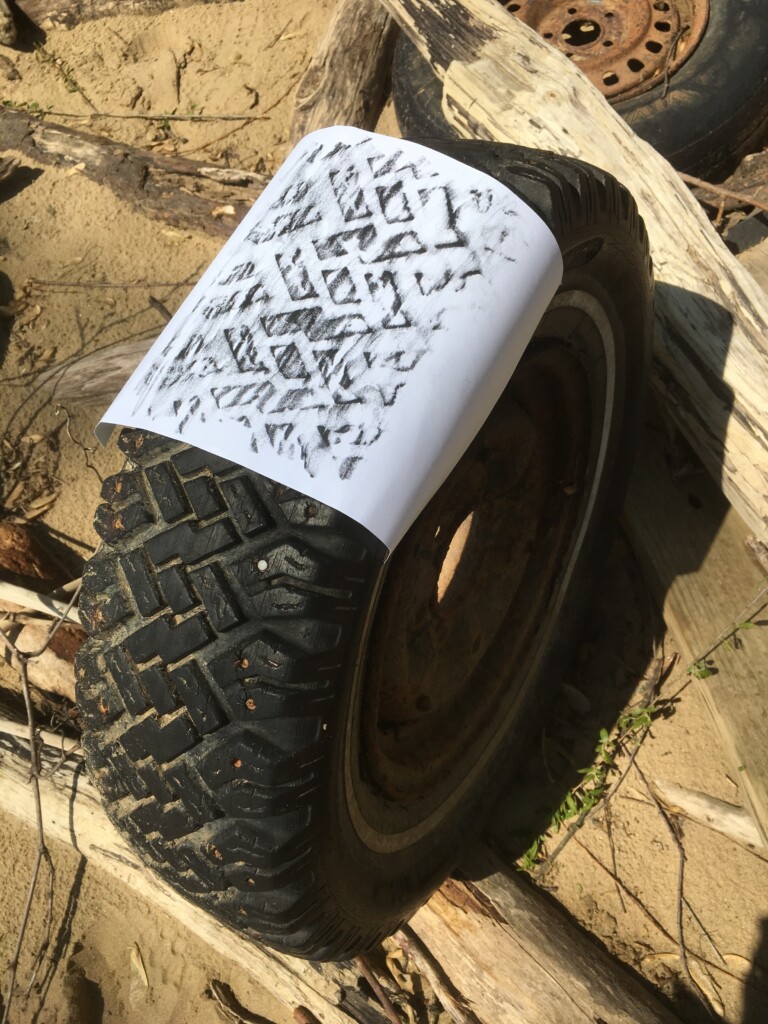
The Renaissance genius, Leonardo Da Vinci first wrote about and advocated reading into stains and shapes as a method of stimulating the imagination. After his death, his collected notes were gathered to form a “Treatise on Painting”. Da Vinci’s quote goes something like this:
“Don’t underestimate this idea of mine, which calls to mind that it would not be too much of an effort to pause sometimes to look into these stains on walls, the ashes from the fire, the clouds, the mud, or other similar places. If these are well contemplated, you will find fantastic inventions that awaken the genius of the painter to new inventions, such as compositions of battles, animals, and men, as well as diverse composition of landscapes, and monstrous things, devils and the like.”
Max Ernst knew this Da Vinci quote and as an artist interested in the subconscious mind and the fantastical fully appreciated this advice from an old master.
Action Steps: Create a collection of frottaged textures. You may already have all the materials needed at home and your local art materials store will certainly have these.
Gather a variety of different papers to experiment with your rubbings. Try copy paper, construction paper, grocery bag paper, tracing paper, newsprint, all papers will have different working properties that may affect the quality of the rubbings. If you want to sample textures in the great outdoors some painter’s tape to hold the paper in place will be helpful.
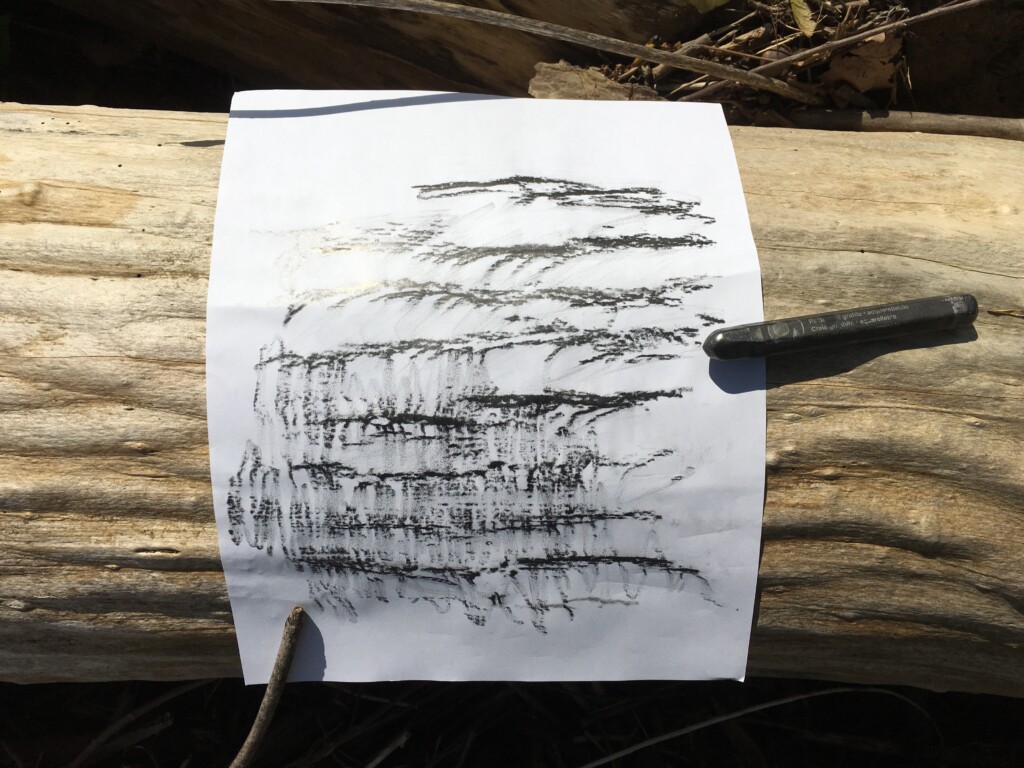
Pencil lead or graphite is a great material to use to transfer the texture to paper. Graphite also comes in stick form which I think is best for making the initial rubbings. Other pencils can be used to work back into your drawing. Graphite comes in different “hardnesses”. The softer it is generally the darker the black mark it will make. The harder the graphite, the lighter the mark. Your typical number 2 school pencil is in the middle range. Other materials that can be used that will introduce colors are wax crayons and pastels. I would peel away the paper from the crayon before doing the rubbing. This is a great use for broken crayons.
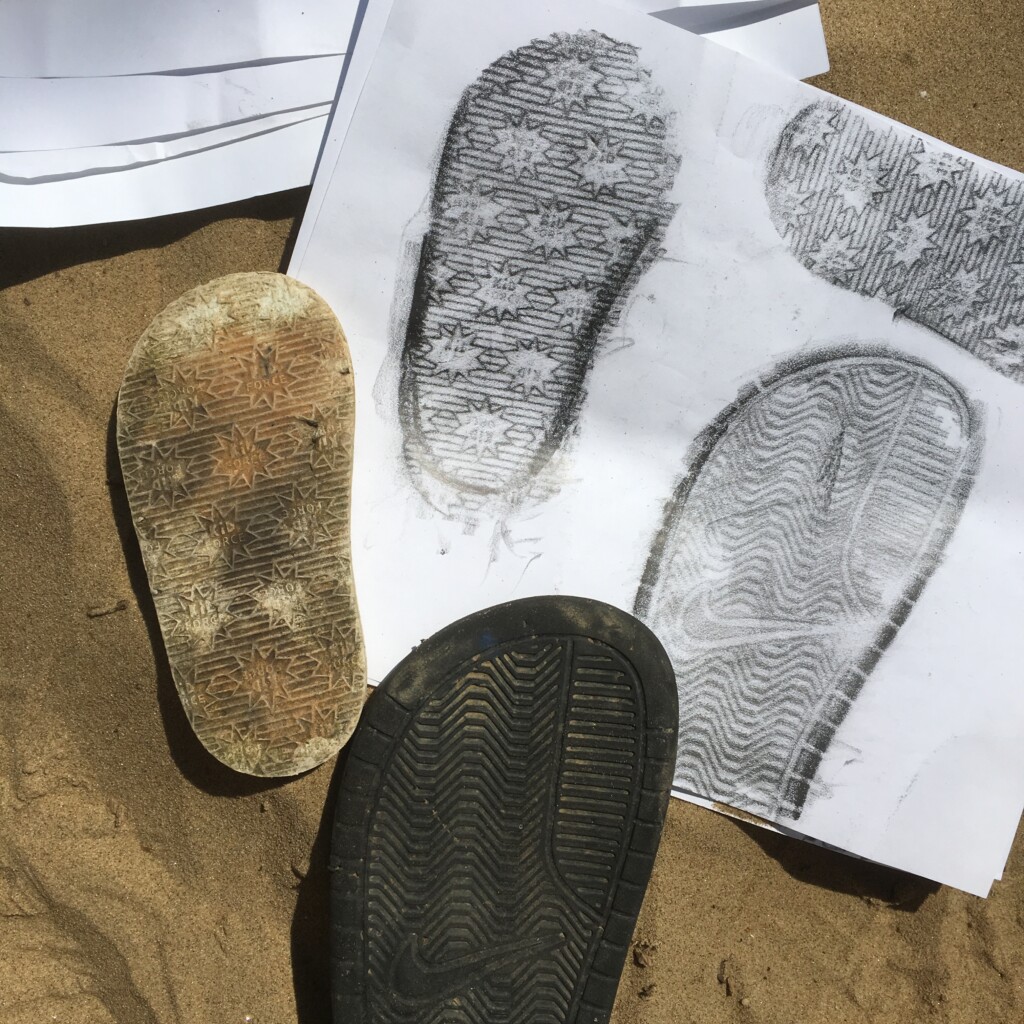
Look around the house or great outdoors for objects and surfaces to sample. Ideal items would be dried leaves, the plastic netting fruit comes in, wood grain, cracked concrete, manhole covers, and just about anything with a low relief texture. If you have used plastic texture plates before these are specifically made for making rubbings. Part of the fun is being surprised by the results after you do a rubbing.
Think about where on the paper to place your rubbing. Careful positioning can lead to interesting compositions. Usually works best to go with the wood grain than against it. Make multiple rubbings on the same paper. Superimpose textures to suggest shapes. The Max Ernst video above shows how he did this using leaves and wood grain.
Taking it Further
Max Ernst liked to work with his frottages by cutting them up, collaging them, and drawing back into what the textures suggested to his subconscious mind. He let the process help form the images that resulted.
I began my frottage investigation visiting the riverbank for inspiration, textures, and objects I could later use in my art. Here is a graphite drawing I made from a nice, flat piece of wood with interesting textures I found at the Falls of the Ohio State Park and took home. Recalling the Da Vinci quote, this drawing method does lead to some surprising results!
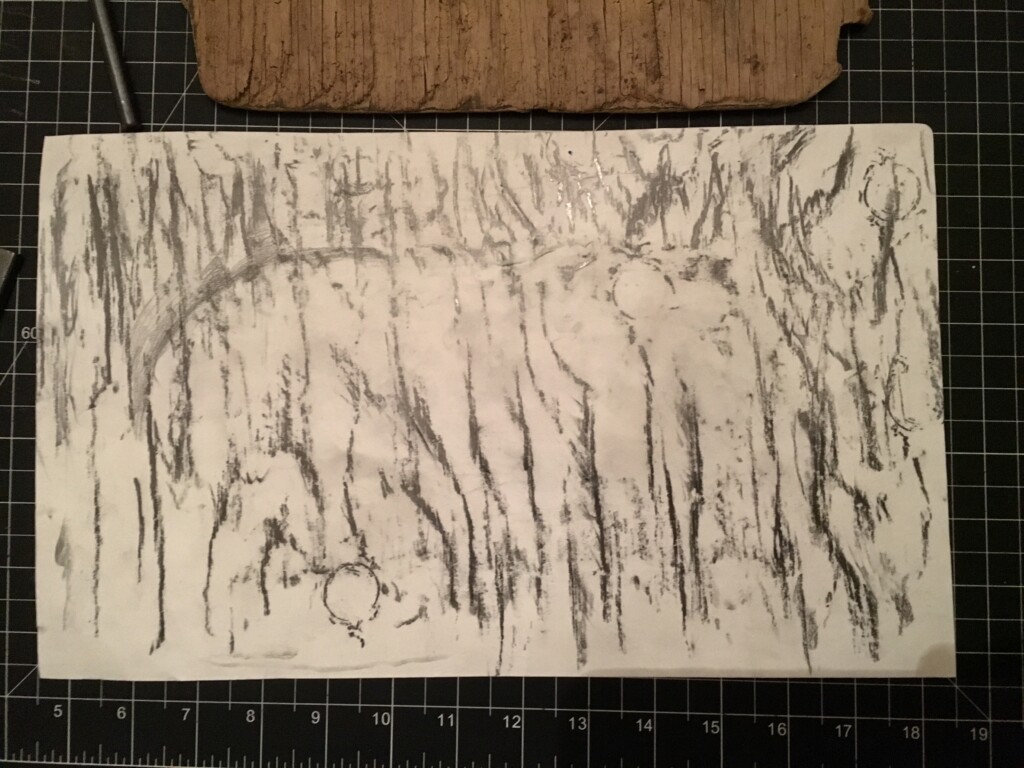
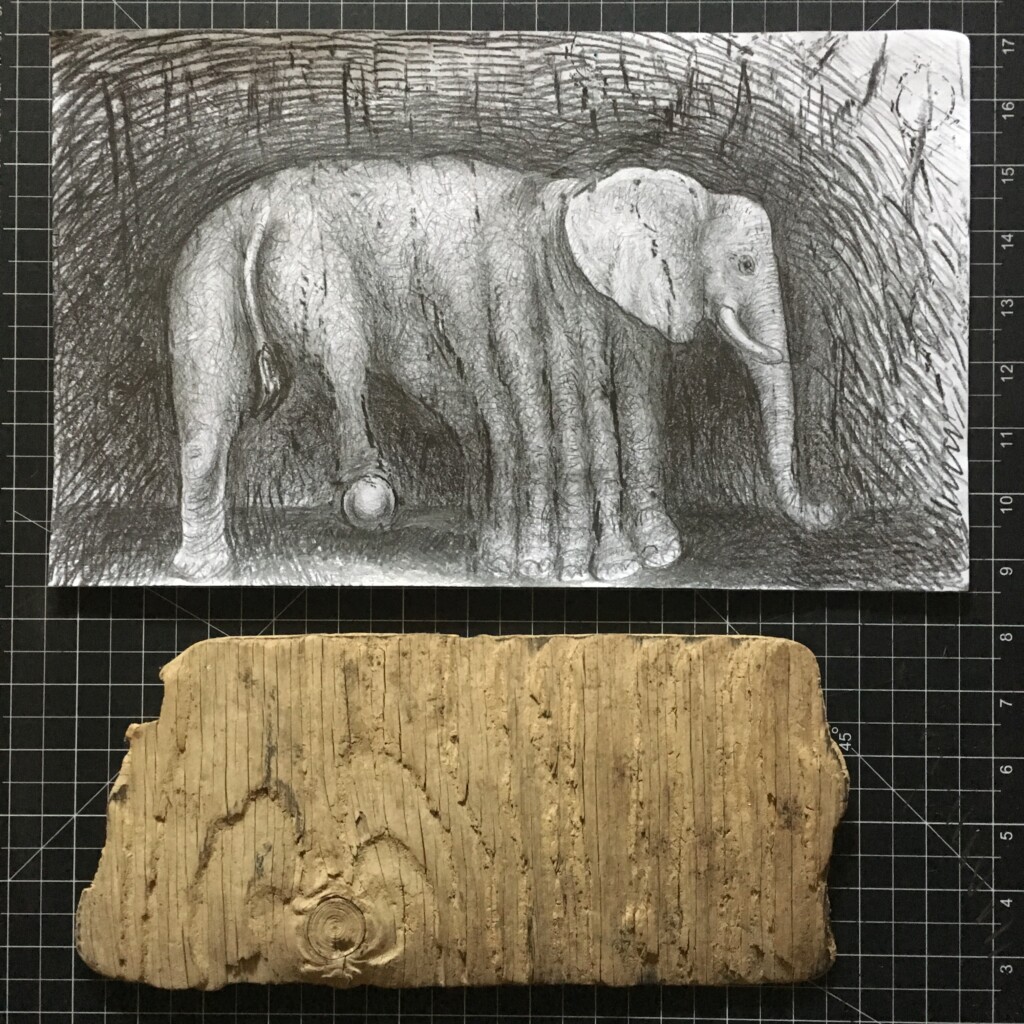
My finished drawing is entitled, The Elephant, Titis and began as several rubbings made using my found piece of wood. I carefully placed my paper over the wood and going with the grain rubbed my graphite over its surface. On the paper, I saw suggested the outlines of an elephant forming. I could see what looked to my mind’s eye to be an elephant’s head with an eye and ear. Other forms also suggested a back and legs…many legs! The knot in the wood became a circus ball. Using a pencil, I worked back into my drawing until I felt I had brought out the elephant I found revealed in this piece of wood. What strange and marvelous wonders will you find in your drawings?
Al Gorman
Coordinator of Public Programs & Engagement
Carnegie Center for Art and History
A Branch of the Floyd County Library
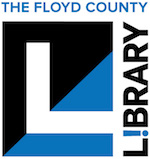
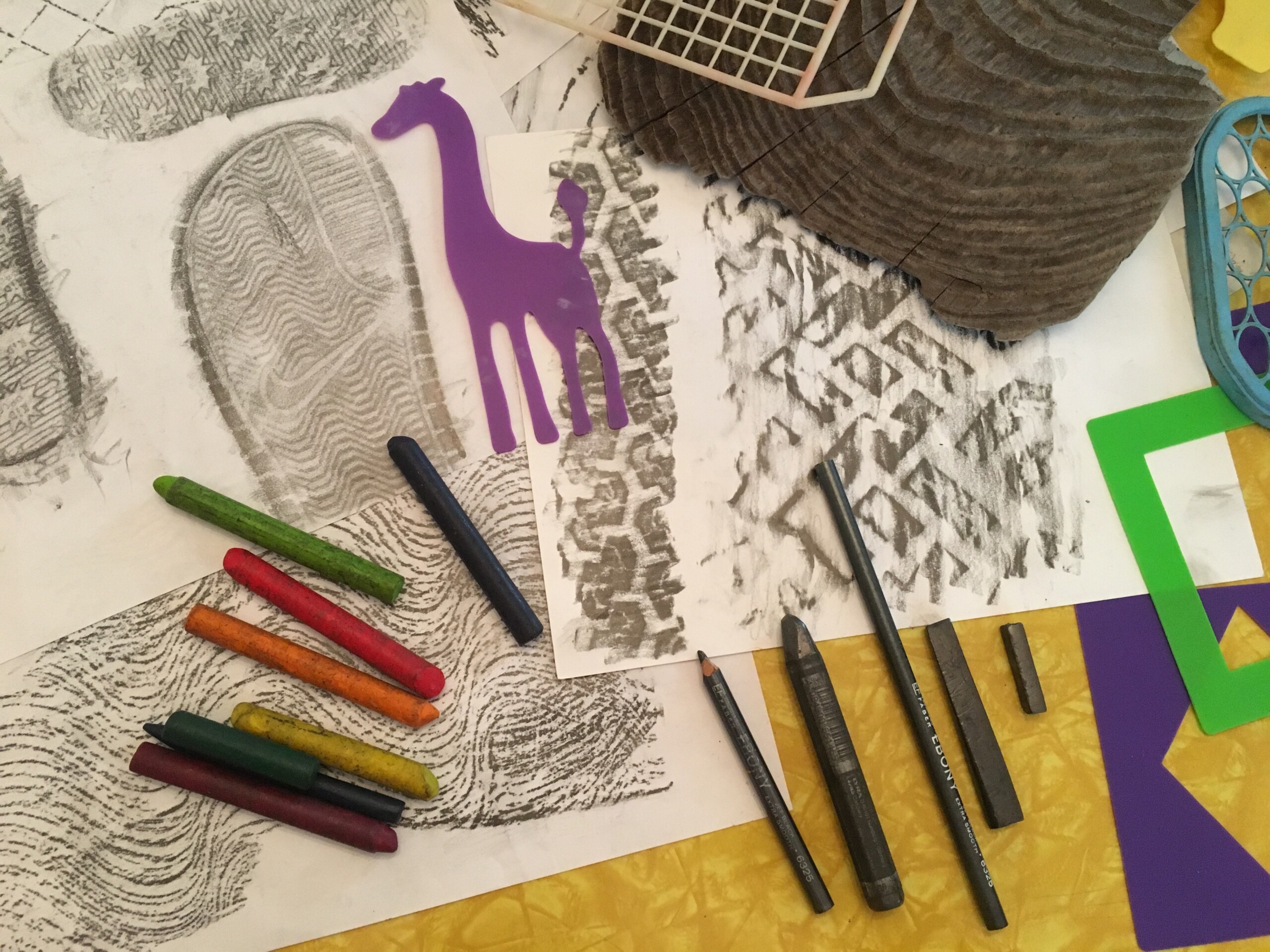
This is very interesting and inspiring!